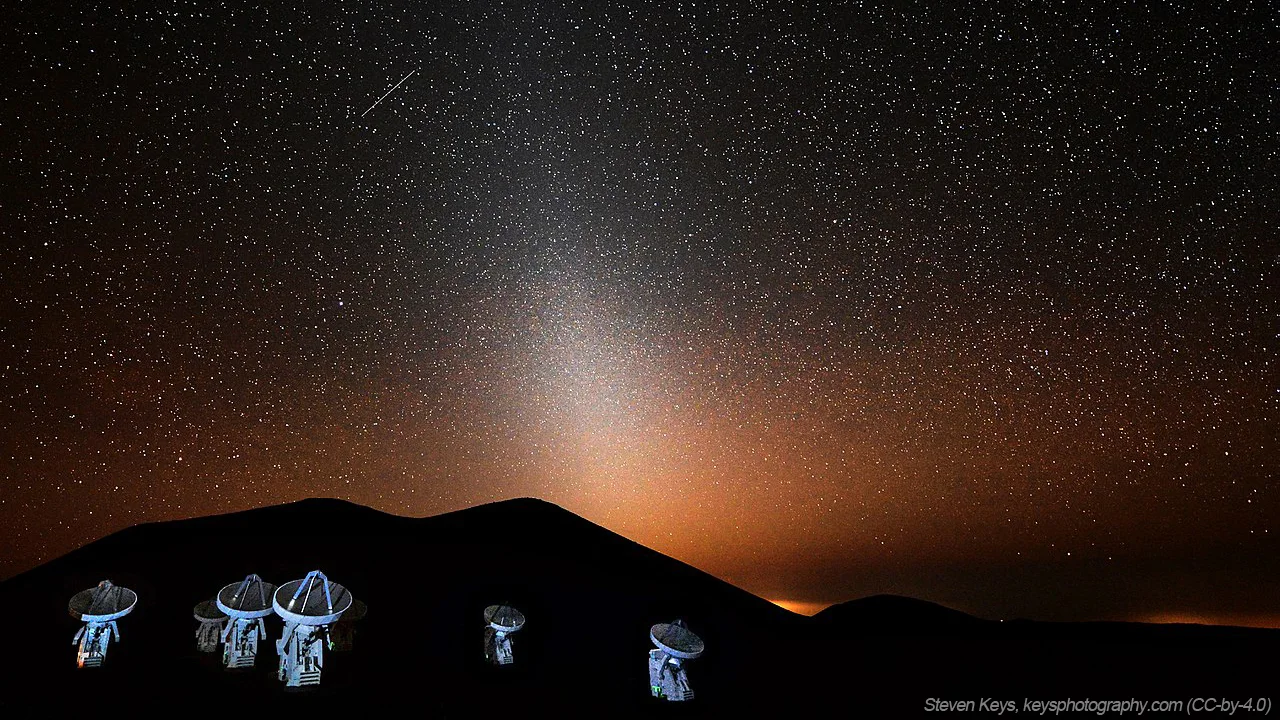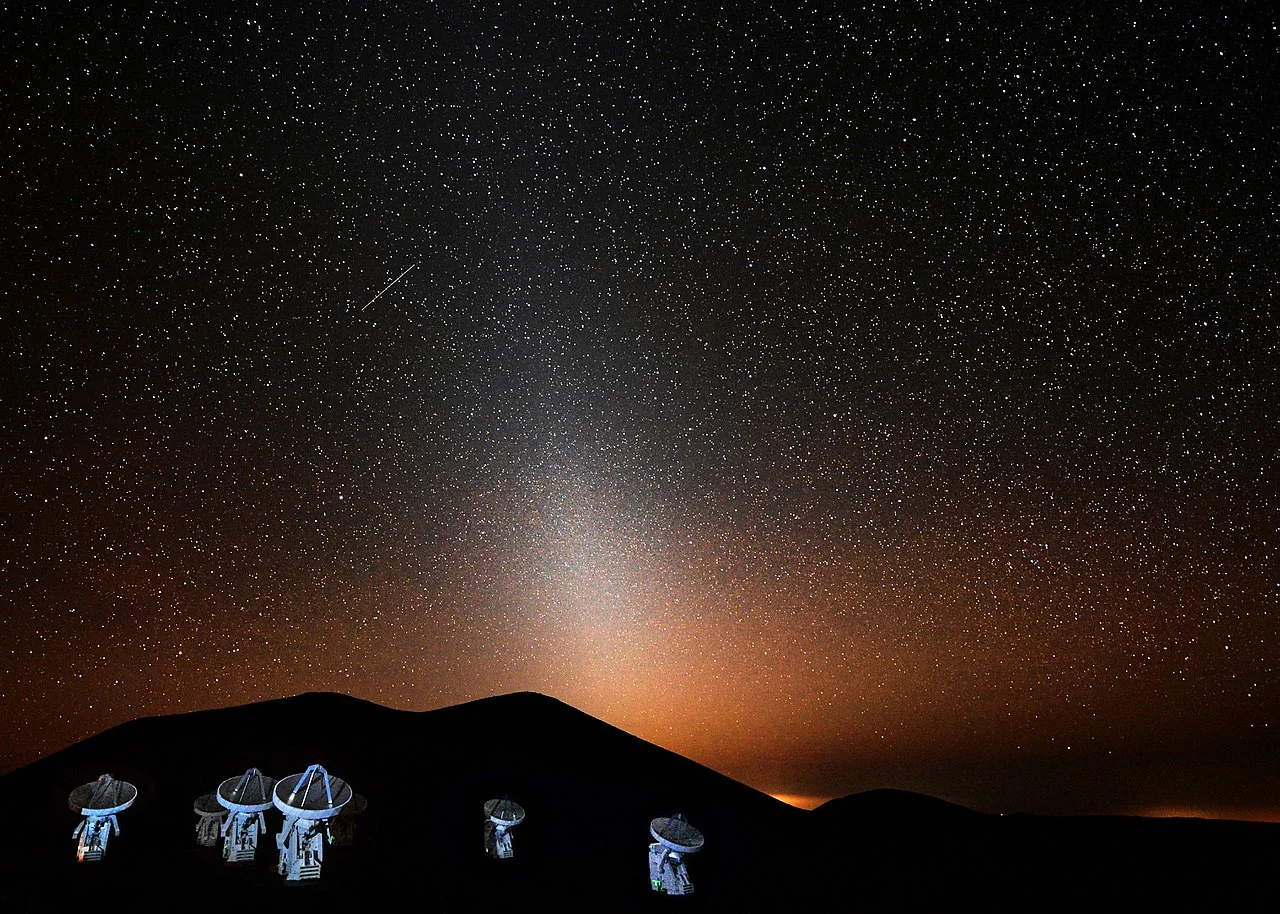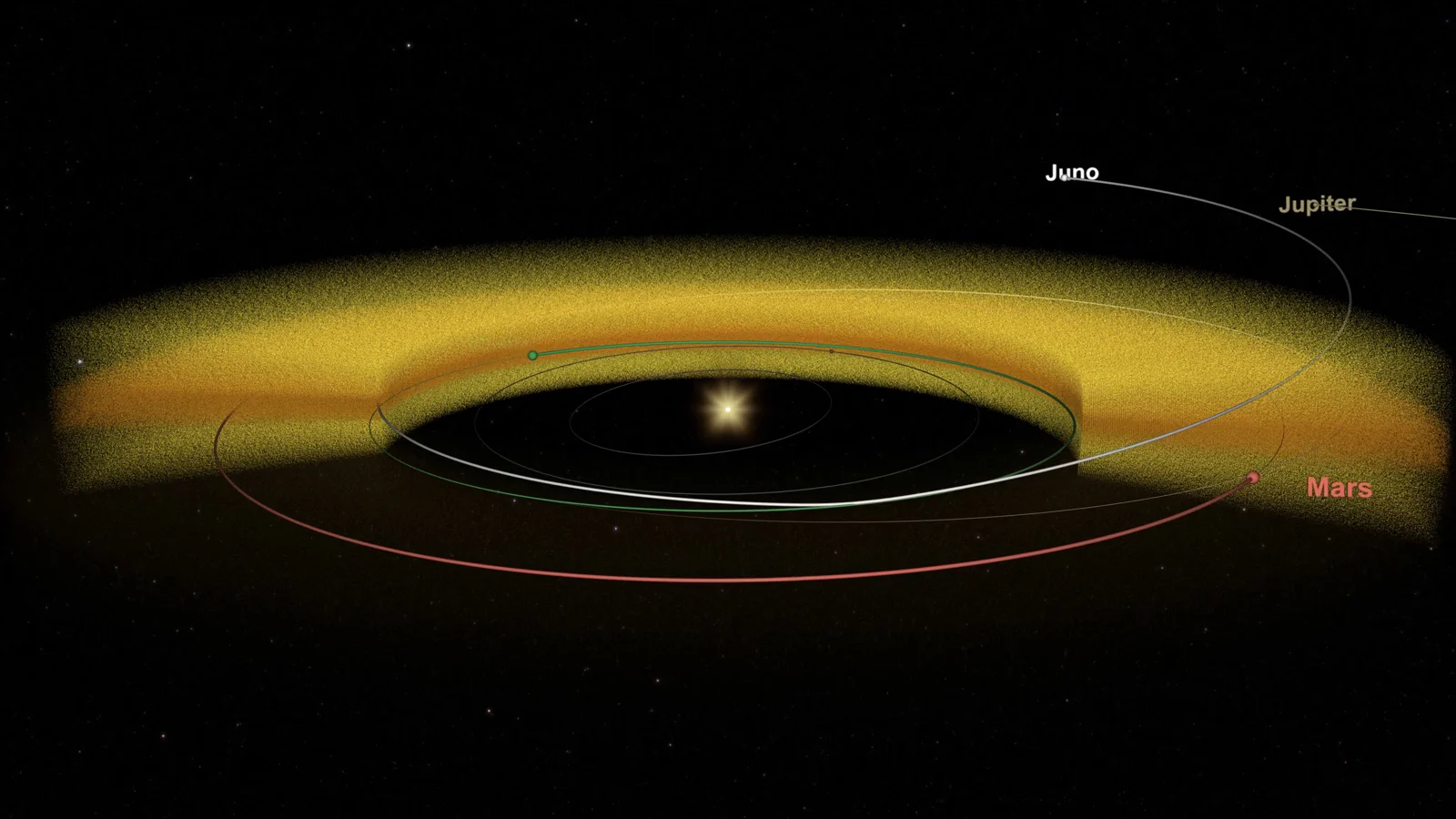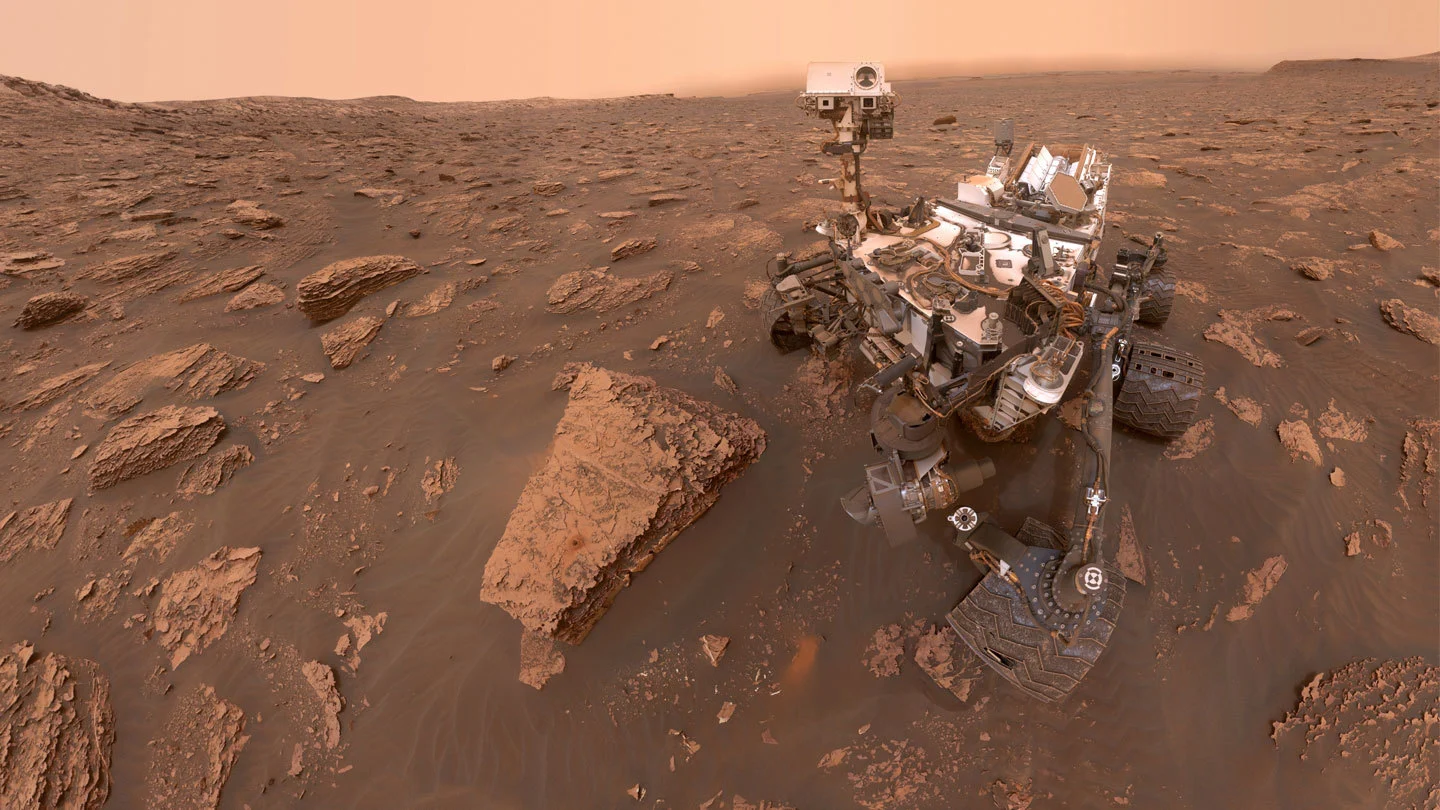
Mars dust storms may be the source of 'zodiacal light' seen from Earth
Have you ever seen a glowing pyramid of light in the night sky? You may have been looking at a cloud of dust from Mars.
While on an interplanetary journey to Jupiter, NASA's Juno spacecraft made an unexpected discovery that may have just pinpointed the source of the 'false dawn' known as the zodiacal light.
Look west each night for the rest of this week, a half-hour or so just after the Sun has completely set. From under a clear, dark sky, you may spot a strange pyramid-like glow extending upward from the horizon. This diffuse glow is caused by sunlight refracting from a cloud of tiny dust particles floating in space. Astronomers call this glow the zodiacal light.

Interplanetary dust glows as the zodiacal light, as seen from the Submillimeter Array on the summit of Mauna Kea. Visible now in the western post-dusk sky until March 14, and then from March 30-April 13. It can also be seen in the pre-dawn sky for a few weeks in both September and October of this year. Credit: Steven Keys, keysphotography.com (CC-by-4.0)
The zodiacal light was discovered centuries ago. When scientists went looking for its source, it was assumed that the interplanetary dust cloud came from asteroids and comets flying through the inner solar system. Recently, data from the Rosetta spacecraft hinted that comets such as its target, 67P/Churyumov-Gerasimenko, were probably a major source of this dust.
A new study using data from NASA's Juno spacecraft, however, shows that the dust may come from a very different and unexpected source — the planet Mars.
According to NASA, while on its journey from Earth to Jupiter, Juno was snapping pictures rapidly with its four star-tracking cameras and continuously comparing the images collected with the known starfield. This was vital for the data collected by the spacecraft's magnetometer instrument.
One of the four cameras was given double-duty, though. In the hopes of discovering a new asteroid, the scientist who designed the cameras — Professor John Leif Jørgensen of the Technical University of Denmark — told this camera to send back images of anything it saw that was not in the star charts. To his surprise, the spacecraft started sending back thousands of pictures from the star-tracker, each having captured some unknown object.
"We were looking at the images and saying, 'What could this be?'" Jørgensen said in a NASA statement. "We thought, 'Something is really wrong.' The images looked like someone was shaking a dusty tablecloth out their window."
Examining these images, Jørgensen and his team figured out that they weren't looking at celestial objects. They were seeing minuscule flecks of the Juno spacecraft's solar panels floating past the camera's field of view. Each of these flecks resulted from an interstellar dust grain smacking into the solar panels at speeds of around 16,000 kilometres per hour.

This diagram shows how repeated impacts on Juno's large solar panels by interplanetary dust were picked up by the spacecraft's star-tracking cameras. Credit: NASA Goddard
"Even though we're talking about objects with only a tiny bit of mass, they pack a mean punch," Jack Connerney, the deputy principal investigator for the Juno mission at NASA's Goddard Space Flight Center, said in the statement.
"Each piece of debris we tracked records the impact of an interplanetary dust particle, allowing us to compile a distribution of dust along Juno's path," Connerney explained.
NASA called Juno's solar panels "the biggest and most sensitive unintended dust detector ever built."
Juno's flight path took it from just inside Earth's orbit, all the way out to the asteroid belt and back for a gravity boost to Jupiter. The catalogue of impacts the spacecraft logged along the way allowed the team to plot the size of the dust cloud and the distribution of the dust within the cloud. They found that the cloud's inner edge starts at Earth's orbit, or at 1 astronomical unit (AU) from the Sun. The cloud's outer edge is around 2 AU from the Sun.
Right in the middle of the cloud, at a distance of 1.5 AU from the Sun, is the planet Mars.

*This diagram shows Juno's path (white) around the inner solar system, in relation to Earth's orbit (blue) and Mars' orbit (red). The interplanetary dust cloud extends from Earth's orbit outward to the asteroid belt, with Mars right in the middle. Credit: NASA Goddard.
The real test came when they constructed a computer model of the dust cloud, taking everything into account, including the planets' positions and influences. When they had the model predict how sunlight would reflect off the cloud, it matched the variations we see in the zodiacal light.
"That is, in my view, a confirmation that we know exactly how these particles are orbiting in our solar system and where they originate," Connerney said.
The question now is, if the zodiacal light is caused by an interplanetary cloud of Mars dust, how did that Mars dust get there?

A self-portrait taken by NASA's Curiosity rover taken on June 15, 2018. At the time, a Martian dust storm reduced sunlight and visibility at the rover's location in Gale Crater. Credit: NASA/JPL-Caltech/MSSS
Mars certainly has plenty of dust to go around. Views from orbit show it everywhere. The planet gets its nickname from the dust's colour. It coats rovers and landers, and nearly every image sent back from the surface shows at least some haziness due to dust in the air. A planet-enveloping dust storm blocked our view of Mars' surface for months back in 2018, and was so bad that it caused NASA's solar-powered Opportunity rover to lose power and die.
While previous studies have shown that this dust can be lofted very high into the atmosphere, according to NASA, Jørgensen and his colleagues are not yet sure how the dust could completely escape Mars' gravity to become part of this cloud.
Could it be that the same processes of the solar wind stealing Mars' atmosphere is also drawing dust from these dust storms into space? It may fall to other missions and other studies to ultimately answer this question.











